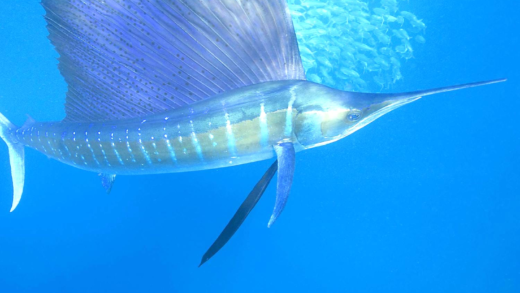Milk snakes are non-venomous reptiles known for their vibrant coloration and adaptability. They mimic coral snakes, confusing many. Understanding their behavior and habitat is crucial for safety and conservation. Milk snakes are beneficial in controlling pests and are unique in various aspects, including their diet and longevity.
Milk Snake Appearance: What Do They Look Like?
Milk snakes are easily recognizable due to their distinct appearance. The main characteristic of a milk snake is its striking coloration, which often includes bands of red, black, and yellow or white. This coloration can vary significantly among different species, but the overall pattern typically consists of alternating bands, making them visually appealing.
Milk snakes can grow to a length of 2 to 4 feet, depending on the species. Their bodies are slender, and they have smooth scales that give them a glossy appearance. This shiny look is not just for show; it helps them blend into their surroundings, aiding in camouflage. The head of a milk snake is usually slightly wider than its neck, and their eyes are round with a dark pupil, which adds to their unique facial features.
The Colorful Survival: How Does Milk Snake’s Coloration Help?
The coloration of milk snakes plays a crucial role in their survival. Their vibrant colors serve as a form of mimicry, allowing them to confuse potential predators. Many people mistake milk snakes for the venomous coral snakes, which also exhibit similar color patterns. This resemblance can deter predators from attacking, as they may assume that the milk snake is equally dangerous.
In addition to mimicry, their coloration helps them camouflage within their natural habitat. Milk snakes are often found in areas with rich vegetation, where their colors can blend in with the environment, making it harder for both predators and prey to spot them. This dual function of their coloration — both as a warning and as a disguise — is a fascinating aspect of their survival strategy.
Milk Snakes vs. Coral Snakes: Key Differences
When comparing milk snakes and coral snakes, the differences become apparent. One of the most critical distinctions lies in their color patterns. Milk snakes typically have red bands separated by black bands, while coral snakes have red bands touching yellow bands. This is a key feature that helps identify them.
Additionally, milk snakes are non-venomous, whereas coral snakes possess a potent venom. Understanding these differences is vital for anyone who may encounter these snakes in the wild. Here are some quick tips to distinguish between the two:
- Color Pattern: Milk snakes have red, black, and white bands; coral snakes have red, yellow, and black bands.
- Head Shape: Milk snakes have a more rounded head, while coral snakes have a more elongated and pointed head.
- Behavior: Milk snakes are more likely to flee when threatened, while coral snakes may display defensive behaviors.
Why Milk Snakes are Often Mistaken for Coral Snakes
Milk snakes are often mistaken for coral snakes due to their similar color patterns. This confusion arises primarily from the fact that both snakes exhibit bright colors that can trigger a natural instinct to avoid them. The old saying, “red touches yellow, kill a fellow; red touches black, friend of Jack” highlights this confusion in a memorable way.
The similarities in appearance can lead to dangerous misunderstandings, especially for those unfamiliar with these species. As a result, educating the public on how to differentiate between milk snakes and coral snakes is crucial for conservation efforts and safety. By increasing awareness, we can reduce the chances of unnecessary fear or harm towards these fascinating creatures.
Are Milk Snakes Dangerous?
Milk snakes are non-venomous and pose no real threat to humans or pets. They are generally shy and prefer to avoid confrontations. If threatened, they may hiss or mimic a rattlesnake’s rattle, which can be quite alarming, but this behavior is mostly a bluff.
In fact, milk snakes can be beneficial to have around as they help control the populations of pests such as rodents. Their diet primarily consists of small mammals, birds, and other reptiles. Understanding that milk snakes are harmless can help alleviate fears and encourage their protection in natural habitats.
Preferred Habitats: Where Do Milk Snakes Live?
Milk snakes thrive in a variety of habitats across North America. They prefer environments that provide ample cover and hunting opportunities. Common habitats include:
- Forests: These snakes enjoy wooded areas where they can hide among leaf litter and logs.
- Grasslands: Open fields allow them to bask in the sun while having access to small rodents.
- Rocky Areas: Milk snakes often inhabit rocky outcrops, using crevices for shelter.
- Farms and Gardens: Human-altered landscapes provide excellent hunting grounds for their prey.
In general, milk snakes are adaptable and can be found in various terrains as long as there is sufficient cover and food. Their preference for habitats that support their diet plays a significant role in their distribution.
Milk Snake Diet: What Do They Eat?
Milk snakes are opportunistic feeders, primarily consuming small mammals, birds, and other reptiles. Their diet typically includes:
- Rodents: Mice and young rats are common prey due to their abundance.
- Birds: Eggs and fledglings are targeted, especially in the spring.
- Other Reptiles: They may also eat smaller snakes and lizards.
Milk snakes are constrictors, meaning they subdue their prey by wrapping around it and applying pressure until it suffocates. This method is particularly effective against small mammals. Their diet varies with the seasons, reflecting changes in prey availability.
Distinguishing Features: How to Tell a Milk Snake from a Coral Snake
To differentiate between milk snakes and coral snakes, one must focus on key distinguishing features:
- Color Pattern: Milk snakes have red bands separated by black, while coral snakes have red bands touching yellow.
- Head Shape: Milk snakes possess a rounded head; coral snakes have a more elongated and pointed head.
- Size: Milk snakes are generally longer, ranging from 2 to 4 feet, compared to the coral snake.
By paying attention to these characteristics, one can accurately identify a milk snake and avoid confusion with its venomous counterpart.
Milk Snake Behavior When Threatened
When threatened, milk snakes exhibit several defensive behaviors to avoid confrontation. Their reactions include:
- Hissing: This serves as a warning to potential threats.
- Playing Dead: Some milk snakes may roll onto their backs, appearing lifeless.
- Fleeing: They prefer to escape rather than engage in a fight.
This behavior reflects their generally non-aggressive nature, as they would rather avoid danger than confront it.
Myths and Facts About Milk Snakes
Many myths surround milk snakes, often fueled by their resemblance to more dangerous species. Common myths include:
- Milk snakes are venomous: This is false; milk snakes are completely harmless.
- They suckle from cows: Another myth; the name “milk snake” comes from a misinterpretation of their coloring, not their behavior.
In reality, milk snakes play a vital role in controlling pest populations and are generally beneficial to have in the ecosystem. Understanding these facts can help dispel fears and promote appreciation for these unique reptiles.
Fun Facts About Milk Snakes: What Makes Them Unique?
Milk snakes are fascinating creatures that exhibit several unique traits. One interesting fact is that they can be found in a variety of colors and patterns, which can vary widely even within the same species. This diversity in appearance is not just for show; it plays a crucial role in their survival and adaptability. Here are a few standout features of milk snakes:
- Color Variation: While many milk snakes have the classic red, black, and white banding, some species can be found in shades of brown and gray, showcasing their adaptability to different environments.
- Behavioral Adaptability: Milk snakes are known to exhibit a range of behaviors when threatened. Besides mimicking the sounds of rattlesnakes, they can also play dead, which can confuse predators.
- Longevity: In captivity, milk snakes can live up to 15 years or more, making them a long-term commitment for pet owners.
- Hybridization: Milk snakes can sometimes hybridize with other snake species, leading to unique offspring with mixed traits.
These fun facts highlight not only the physical and behavioral traits of milk snakes but also their importance in the ecosystem. Understanding their uniqueness can foster greater appreciation and encourage conservation efforts.
Final Thoughts on Milk Snakes
Milk snakes are remarkable reptiles that play an essential role in their ecosystems. They are non-venomous, adaptable, and exhibit fascinating behaviors that make them unique among snakes. With their striking appearance, they often confuse people with more dangerous species, like coral snakes, leading to myths that can misinform the public.
Understanding the true nature of milk snakes — their diet, habitat preferences, and behaviors — is crucial for both conservation and safety. By learning to distinguish them from their venomous counterparts, we can reduce unnecessary fears and appreciate their role in controlling pest populations. As fascinating and beneficial creatures, milk snakes deserve our respect and protection.





Comments are closed.